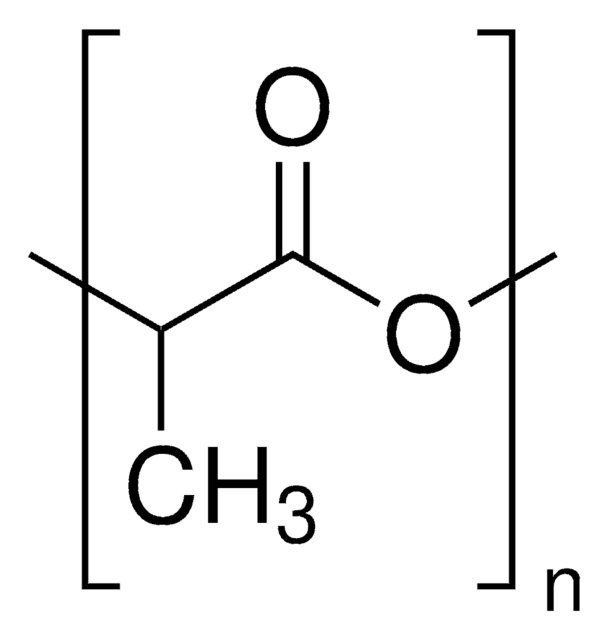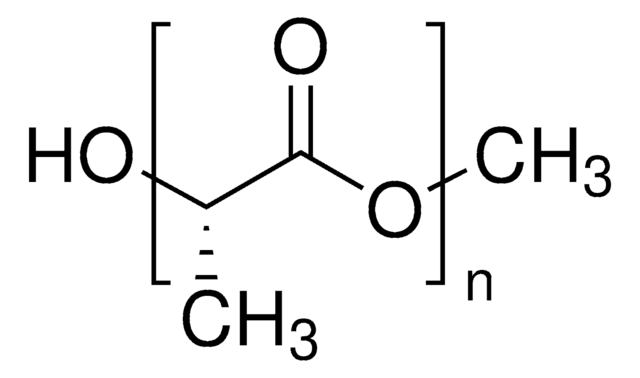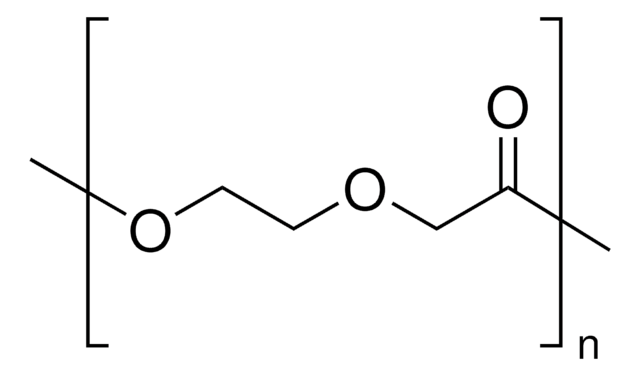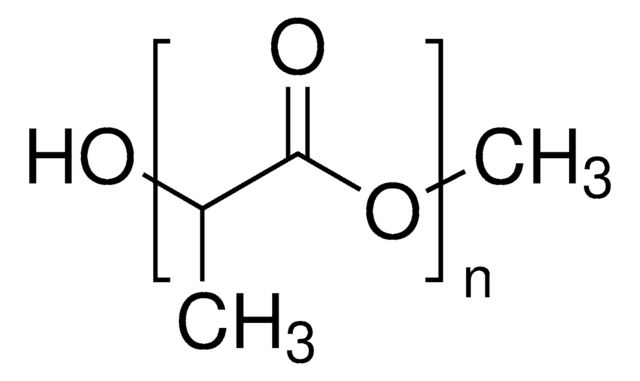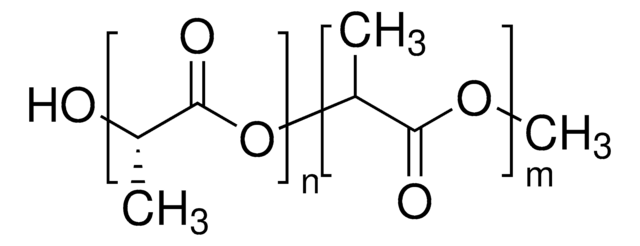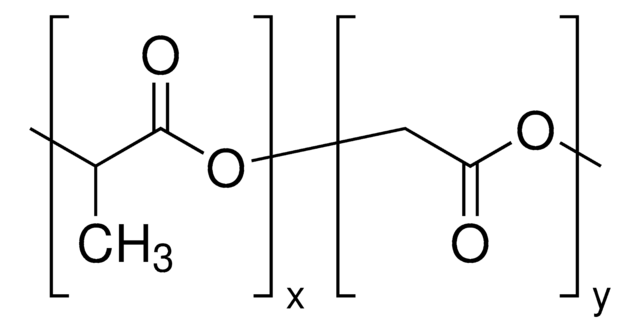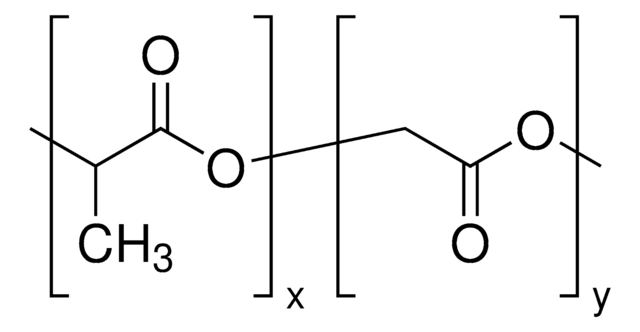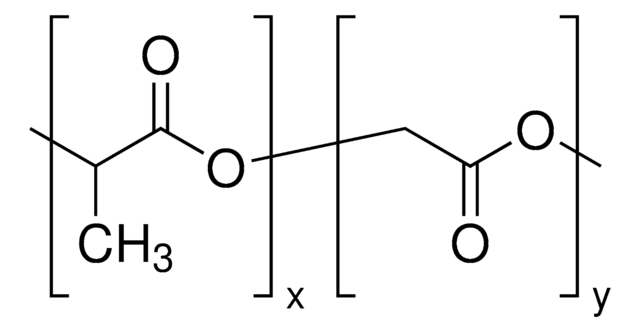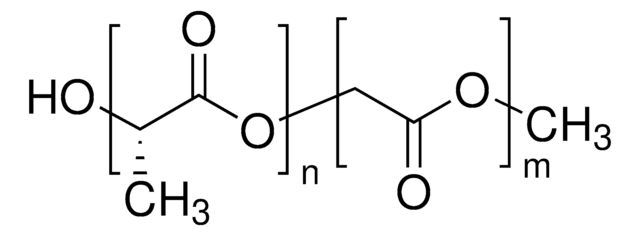719854
Resomer® L 206 S, Poly(L-lactide), ester terminated
Sinonimo/i:
PLL
About This Item
Prodotti consigliati
Forma fisica
granular
Tempo di degradazione
>3 years
Viscosità
0.8-1.2 dL/g, 0.1 % in chloroform(25 °C, Ubbelohde) (size 0c glass capillary viscometer)
Temp. transizione
Tm 180-185 °C
Tg 60-65 °C
Temperatura di conservazione
2-8°C
Categorie correlate
Descrizione generale
Applicazioni
Note legali
Prodotti correlati
Codice della classe di stoccaggio
11 - Combustible Solids
Classe di pericolosità dell'acqua (WGK)
WGK 3
Punto d’infiammabilità (°F)
Not applicable
Punto d’infiammabilità (°C)
Not applicable
Scegli una delle versioni più recenti:
Possiedi già questo prodotto?
I documenti relativi ai prodotti acquistati recentemente sono disponibili nell’Archivio dei documenti.
I clienti hanno visto anche
Articoli
Aliphatic polyesters such as polylactide, poly(lactide-co-glycolide) and polycaprolactone, as well as their copolymers, represent a diverse family of synthetic biodegradable polymers that have been widely explored for medical uses and are commercially available.
Aliphatic polyesters such as polylactide, poly(lactide-co-glycolide) and polycaprolactone, as well as their copolymers, represent a diverse family of synthetic biodegradable polymers that have been widely explored for medical uses and are commercially available.
In the past two decades, tissue engineering and regenerative medicine have become important interdisciplinary fields that span biology, chemistry, engineering, and medicine.
Innovations in polymer technology have had a significant impact on the advancement of novel drug delivery systems.
Contenuto correlato
Interest in utilizing biodegradable polymers for biomedical applications has grown since the 1960s.
Il team dei nostri ricercatori vanta grande esperienza in tutte le aree della ricerca quali Life Science, scienza dei materiali, sintesi chimica, cromatografia, discipline analitiche, ecc..
Contatta l'Assistenza Tecnica.

